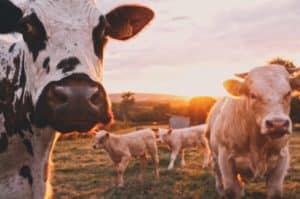“I just wanted to let you know, your cow, Elsa, is dead“. This is how a famous skit by the German comedian Didi Hallervorden begins. The underlying joke is that the explanation as to why Elsa is dead keeps unearthing more and more terrible news. At the end, Elsa the Cow was only an excuse for conveying bad news. Unfortunately, this story line also works in the field of sustainability. But first things first.
A few weeks ago University of York published a study that showed that the Danube was the river with the highest antibiotic contamination in Europe. Seven different antibiotics were detected, one of them four times above the critical value that is still considered non-hazardous. The problem is not limited to Europe. The study analysed 711 rivers across 72 countries worldwide.
Values in Bangladesh exceed safe value of antibiotic contamination by a factor of 300x
In Bangladesh, some values exceeded the critical threshold of antibiotic contamination considered non-hazardous by a factor of 300x. The authors of the study cited the dumping of sewage water and waste into the water used by people and animals as causes. The heavy use of antibiotics in industrial agriculture is regarded as one of the reasons of the globally rising number of bacteria that are resistant to antibiotics. This is one of the big unresolved medical issues of the future.
How do the antibiotics make it from the cow into the Danube? Quite simple: one litre of milk “costs” three litres of manure. This is roughly the ratio for the excretion that cows produce and that contaminate the environment, particularly the groundwater. Water (and the lack of its clean and generally accessible variety), in turn, is another one of the big topics of the future and thus of sustainability.
16,000 litres of water for one kilo of meat
What makes matters worse is the fact that the production of one kilo of meat requires about 16,000 litres of water. At an average daily water consumption of an Austrian of 135 litres, this translates into 118 days’ worth of water consumption. Or, 3 kilos of meat require the annual water consumption of an individual.
Unfortunately, that’s not all as far as bovine excretions are concerned. Ruminant animals swallow their food more or less whole and digest it in one of their usually four stomachs. That is where the food is broken down for further digestion. This process produces carbon dioxide and in particular methane, which from the perspective of climate protection is 25 times more harmful.
These gases are emitted from the digestive tract and make it into the atmosphere, where they contribute significantly to the greenhouse effect. Which brings us to the next big topic in the field of sustainability.
Dietary trends of the future
Many dietary trends of the present such as cheap fast food and a worldwide increase in meat consumption suggest that these problems will continue to get worse. Both trends in turn burden human health – just think of the issue of obesity.
That, too, is a topic for sustainable investors. And given that the rising demand has to be met, the volume of required fodder increases, as does the space needed, furthering industrial agriculture and gene technology.
The Pantanal, a huge wetland area with an impressive scenery at the border of Brazil, Bolivia, and Paraguay, is the last big area of the world that has not yet been touched by agriculture. And as we know since Hainburg (N.B. large-scale demonstrations against a planned hydroelectric power plant in the Hainburger Au flood plain in December 1984) the conflict between economic and environmental interests is one of the big issues in sustainability.
Ladies and Gentlemen: Elsa the Cow is dead and on the plate in front of you. This ESG Letter examines the large-scale knock-on effects in sustainability of this small piece of news. We hope you enjoy reading it.
Legal note:
Prognoses are no reliable indicator for future performance.

